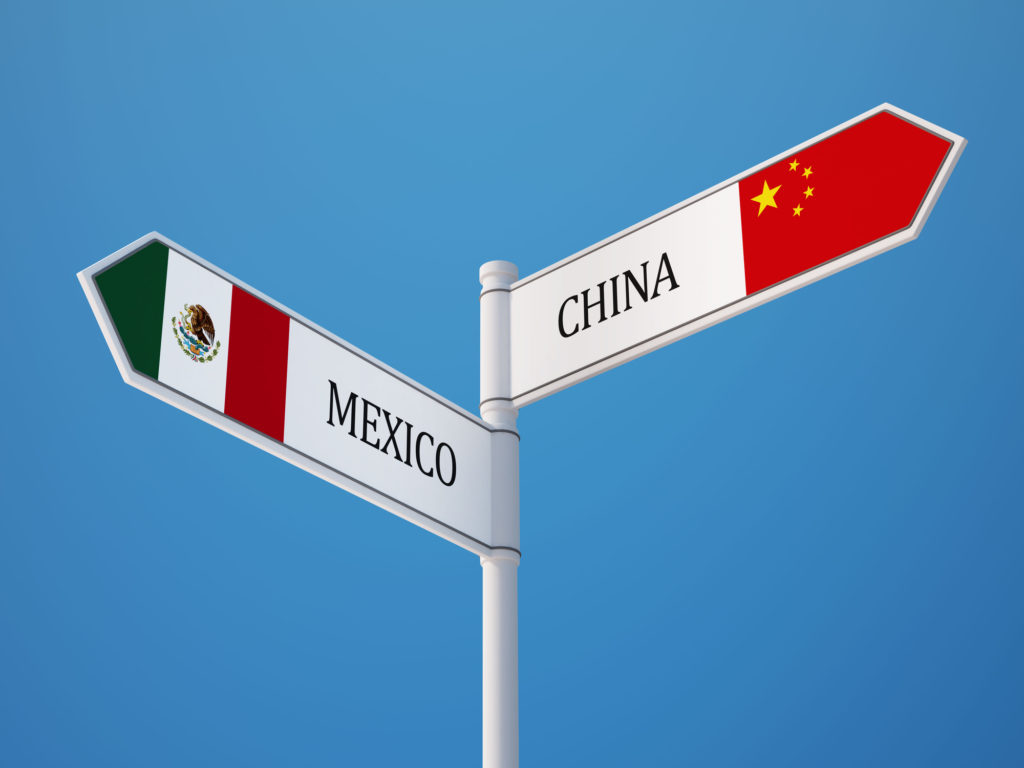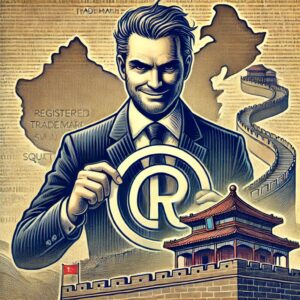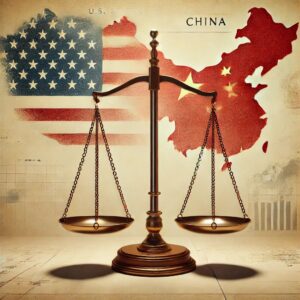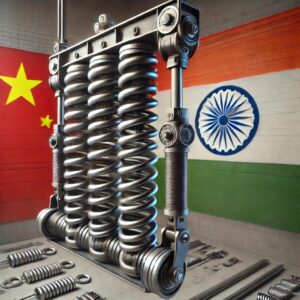The increasing enmity between China and the West, stemming in large part from China’s increasingly aggressive actions regarding Taiwan, China’s COVID-zero policy, and a whole host of other issues facing foreign companies that do business in or with China, has caused just about every foreign company involved with China to reassess. See Nancy Pelosi’s Visit to Taiwan is Really Bad for Your China Business and Sourcing Product From China Just Got Even Riskier.
With all that has been happening, I have been getting a constant stream of phone calls and emails from companies looking to leave China and many of those companies are curious about Mexico. For these reasons, I have asked my good friend Andrew Hupert to write a series of posts explaining what is involved in moving operations from China to Mexico, in large part by comparing the two countries from a business perspective. I turned to Andrew because he is that rare combination of academic (he’s a business school professor) and businessperson, and I have great respect for his real world views. When my law firm first began to step up our China practice (we had previously been focused on Russia and Japan), Andrew was one of my go-to people on all things China. Andrew was at that time living and working in Shanghai, and I would visit with him every time I went there.
But as much as Andrew had tied his life and career to China, he, like me, was one of the early proponents of a post-China manufacturing world. So much so that Andrew moved to Mexico, reinvigorated his Spanish language skills and began helping companies — especially companies looking to leave China — navigate Mexico. So, who better to write about what it takes to leave China (in whole or in part) for Mexico than Andrew Hupert? I asked Andrew to write a series of posts for us and he graciously consented and the below is part one of what I hope and expect to be a long-running series.
Over to Andrew for an introduction to this new blog series . . . .
CEOs and senior managers have been struggling to make good decisions about supply chain and factory sites, and a lot of their research is pointing to Mexico as a likely candidate. The problem facing decision-makers is that the China-Mexico comparison is not apples to apples (DO NOT make avocado-lychee reference). Even though the same output is leaving the factory gate in each economy, your challenges in setting up and managing operations in China and Mexico could not be more different.
China’s economy is highly structured and planned by a powerful, centralized authority. Mexico’s economy is decentralized, unplanned (realistically), and reactive. Though there are some superficial similarities between the two economies, international managers should plan on adjusting their approach when moving between the two business environments. Today we’ll look at the basic questions keeping international managers awake at night:
- Can I continue producing and assembling my products in China?
- Can I be successful in Mexico?
End of the Story First: In a head-to-head matchup of operational effectiveness and site selection between China and Mexico, China wins handily … in 2010. Now, Mexico is the right choice for SOME MNC supply chains. Sorry China. It’s not (just) you. It’s COVID and it’s changing worldviews too.
1. Can you Remain in China?
a. If you are providing services to Chinese B2B markets, producing for sale within China and Asia (or are a large MNC that can segregate supply chains), if you specialize in MNC supply chains globally, or you otherwise rely on an end-to-end global presence (hotel, travel, financial service), than probably yes.
b. If you need materials, components, technology, or processes that aren’t available other than in China, and you can wait-out the existing difficulties for 18-36 months, then maybe. This covers a lot of you reading this – but your situation is deteriorating rapidly (Taiwan, U.S. politics, COVID lockdowns, etc.). Watch how well retail distribution goes in the run-up to the 2022 Christmas season. If logistics problems are blamed for bad sales or product launch failures, many CEOs will take that as their “final straw” indicator – and more companies will exit China. You don’t want to be the last international manufacturer in China.
c. If you are using a low-cost production strategy – small runs of pre-sold products, LCL (less than a full container) shipping, and/or low-priced consumer goods to U.S. markets, then probably not. China’s days as the low-cost, high-velocity manufacturing center are on the ropes – at least in the short term.
2. Can You Succeed in Mexico?
a. If you are making the right kind of product (auto & related, aero, labor-intensive, other), in the right way (100% owned subsidiary) for sale to the United States, manufacturing in Mexico could boost your profits, rescue what’s left of your sanity, and help reconcile your supply chain with 2022 realities (as opposed to 2010).
b. If you are assembling electronics, producing medical or EV/green technologies, making furniture or certain textiles – then Mexico might be a good option, but you will have to put together some pieces that are already taken care of in China.
c. If you are trying to replicate the sourcing and manufacturing models you used successfully in China. If you are relying on a deep bench of contract manufacturers to cheaply and easily turn out short runs of your part, you will probably struggle in Mexico. The recent influx into Mexico of operations managers with China+1 experience has people TALKING about sourcing and contract manufacturing, but it’s not a common business model in Mexico and the people I’m speaking with oftentimes do not recommend it. Be aware that in Mexico, when they say OEM they mean wholly owned subsidiary, not contract manufacturing as a service. I visited a Caterpillar plant in Coahuila that the locals referred to as an OEM, but I (and my NYU Finance profs and international lawyers) would call a subsidiary. It’s a Caterpillar plant, with Caterpillar employees, and it only produces product for Caterpillar. The ecosystem for contract manufacturing (like that in places in China like Shenzhen and Dongguan) just doesn’t exist here – and it might not ever develop.
To help navigate the uncertain, untested road ahead, I’m putting together a few notes that compare and contrast your business life in China and Mexico.
First, we’ll look at the Big Picture. How does China’s planned, managed, zoned economy compare with Mexico’s free-wheeling, state-by-state, user-driven business environment? Mexico’s DIY approach to supply chain management will appeal to some, but leave others swamped by thousands of details and decisions they didn’t have to make in Shenzhen. We can’t talk about international business without discussing logistics – and the fact that Mexico’s 2,000-mile land border with the U.S. has suddenly become a major competitive advantage. Unfortunately, we also have to look at trade relations and geopolitics. Mexico’s relations with the U.S. are up and down, but the USCMA (NAFTA2) regulates the trade access you care about. China’s relations with the U.S. are somewhat strained now – but domestic politics in the U.S. may drive tensions to the breaking point in the near future (if that hasn’t already started).
Then we’ll drill down to the organization level and discuss how operational set-up and management differ between China and Mexico. The good news from China is that, even as China has become more expensive (labor, shipping), it is a “known quantity” from a managerial perspective, where many of us have learned hard lessons and built extensive networks. Western bosses, however, are learning that their management experience in China does NOT transfer well to other markets. There’s an old Chinese expression that we used to describe business in China: “Everything is possible, but nothing is easy.” Mexican managers do NOT say this. In freewheeling Mexico, producers, suppliers, and even partners may very well decide a project isn’t worth it or isn’t possible. The good news is that the operations that go forward will probably be well managed – it’s unusual to invest in Mexico without an independent feasibility study and business plan. The bad news is that if your project doesn’t fit in with “normal practice” in Mexico, you may have to devote a great deal of energy to convince suppliers and partners. It’s not like China, where there is ALWAYS someone willing to take your money and then try to figure out how to meet the requirements. Mexican suppliers and partners play it safer than their Chinese counterparts, and are much more likely to turn down a proposal.
We’ll finish up by looking at face-to-face, day-to-day interactions in each market. Negotiating in China is very different from negotiating in Mexico, and techniques that work in Shanghai will frustrate you in Monterrey. Spoiler alert: Chinese negotiating behavior is characterized by Patience and Pragmatism; Mexican negotiators have been described as Decisive and Skeptical. In China, it’s unusual to hear a hard “no” as a response to a proposal. In Mexico, you’ll hear a lot straight up, definitive NOs. Sometimes the honesty is refreshing – but often it reflects an underlying reality that you have to manage.
Next: Comparing China and Mexico – Big Picture issues that matter to managers: Government, Culture, and Crime & International Relations.
Andrew Hupert lives and works in Mexico, where he helps international businesses get their supply chains under control. After more than 20 years in Asia (Shanghai, Taipei, Hong Kong, Saigon), Andrew decided to follow his own advice and move his operations closer to home. He is now based in Saltillo, Coahuila, the “Detroit of Mexico”, where he shows companies how to expand or adjust their supply chains for 2023 and beyond. He sums up his new effort very simply: “Bosses who don’t control their supply chains and sourcing don’t control their own business.” Contact Andrew to talk about the future of your supply chain: Andrew@JLAsociados.com.mx.

























